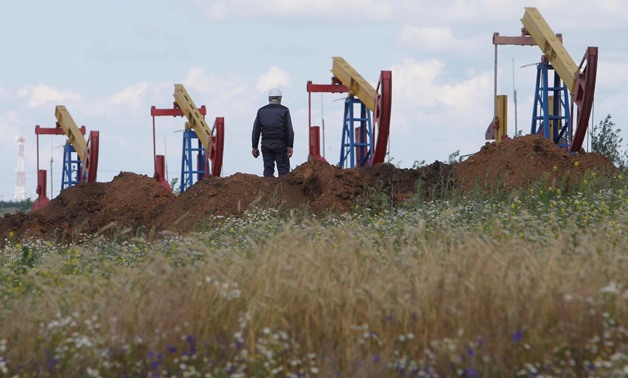
A worker stands in front of pump jacks at the Ashalchinskoye oil field owned by Russia's oil producer Tatneft near Almetyevsk, in the Republic of Tatarstan, Russia July 27, 2017. REUTERS/Sergei Karpukhin
LONDON - 17 November 2017: Oil prices rose on Friday but remained en route for their first week of losses in six, as concerns grew over Russia’s support for an extension of the crude output cuts that have bolstered prices in recent months.
Benchmark Brent crude oil LCOc1 was up 50 cents at $61.86 a barrel by 1000 GMT. U.S. light crude was at $55.90 a barrel, up 76 cents.
Friday’s slight uptick belied a downturn seen in recent days, with prices set to fall between 2 and 4 percent for the week as a whole.
“After five days of continuous losses, an upside correction is always on the cards. Such a jump, however will not mean a change of heart,” said Tamas Varga, analyst at brokerage PVM Oil Associates.
An agreement by the Organization of the Petroleum Exporting Countries and other producers such as Russia to limit oil production has propped up prices in recent months, with the deal expected to be extended at the group’s next meeting on Nov. 30.
But fears of hesitation on Russia’s part weighed on prices on Friday.
“Russian support for a formalized extension of production cuts at the (next) OPEC meeting appears questionable, even if only to defer the decision to 1Q18,” U.S. investment bank Jefferies said.
Saudi Arabia has signaled a willingness to extend the curbs, which are due to expire in March 2018, with energy minister Khalid al-Falih saying on Thursday that targets to reduce global oil surplus would not be reached in time.
“We need to recognize that by the end of March we’re not going to be at the level we want to be which is the five-year average, that means an extension of some sort,” al-Falih said, referring to inventory levels in the developed world.
OPEC’s main obstacle in tightening the market is the United States, where crude oil production C-OUT-T-EIA hit a record of 9.65 million barrels per day (bpd) this month, meaning U.S. output has risen by almost 15 percent since their most recent low in mid-2016.
“Let’s assume that U.S. oil production continues its upward trajectory. They could very well be at 10 million bpd by the end of 2017,” said Matt Stanley, a fuel broker at Freight Investor Services (FIS) in Dubai.

Comments
Leave a Comment